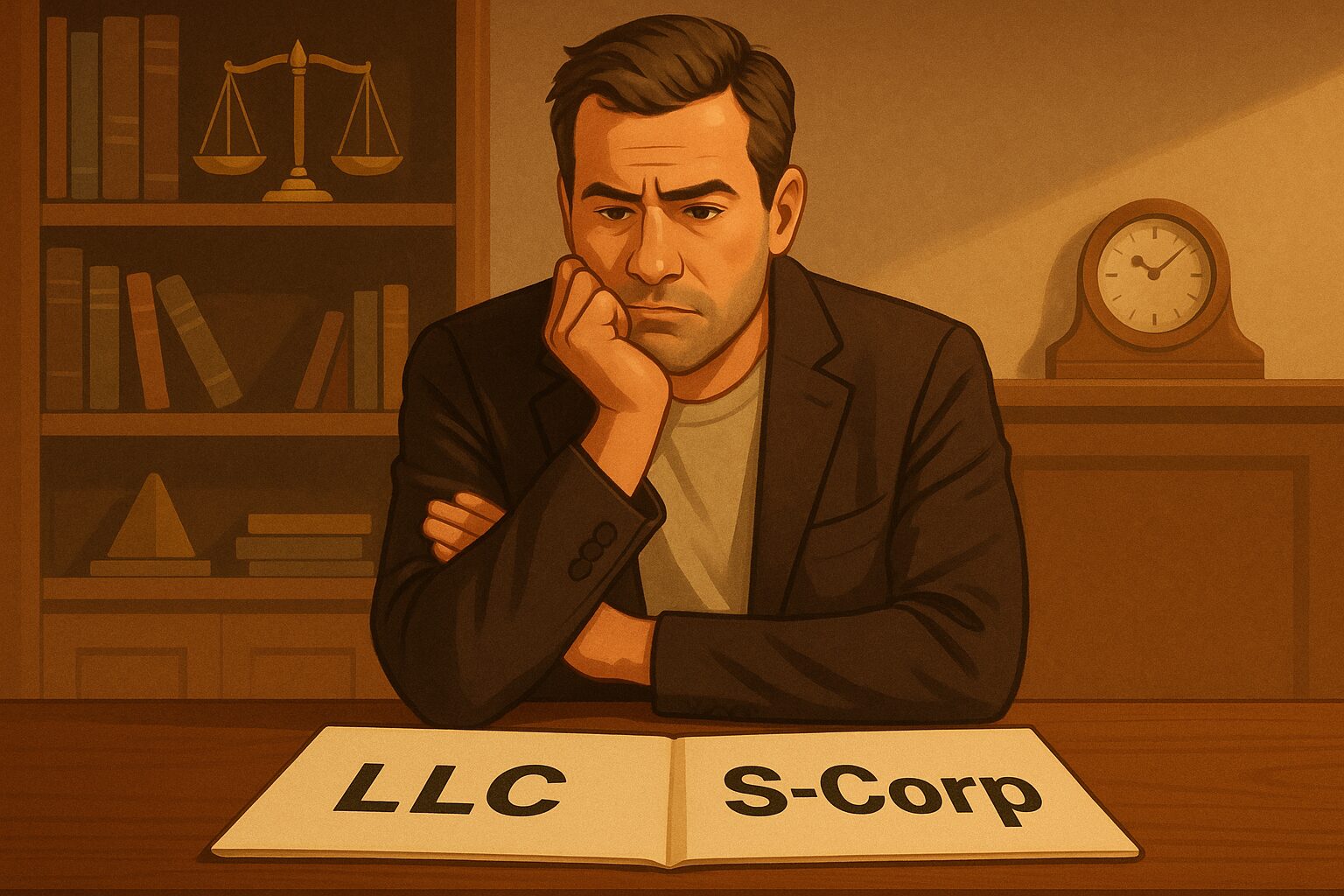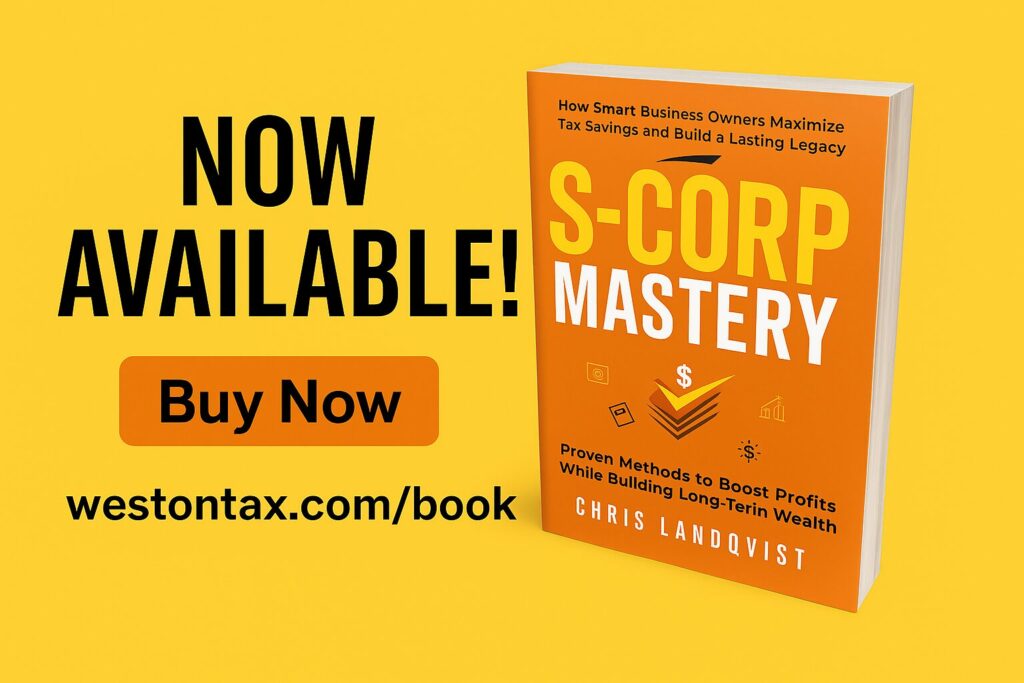Each year around this time, business owners start to get that uneasy feeling in their stomach. It’s not just about taxes… it’s about the unknown. And lately, that unknown has been showing up in the form of a letter from the IRS.
Lately, I’ve seen a sharp uptick in what we call “soft audits” — those tech-enabled correspondence audits that quietly land in your mailbox. They aren’t the dramatic, full-blown investigations with agents knocking on your door.
Quick interruption from your cable network: IF you didn’t read our previous articles about audits… maybe you should start there? Now back to your original programming…
Instead, they’re automated, data-driven inquiries powered by the IRS’s new digital review systems. These are a result from what was originally tested under the DOGE initiatives that became a hot topic when launched.
In plain English: the IRS is finally catching up.
After years of being behind, the agency is now leaning heavily on technology to sift through millions of returns. They aim to identify discrepancies, unusual deductions, and mismatched data with algorithmic precision. The IRS may move slowly, but once it starts rolling, it doesn’t stop. This wave of correspondence audits is the beginning of that momentum, and the backlog of untackled returns from prior years is finally getting attention.
That means more business owners and high-income individuals will start receiving these letters. Not because they’ve done anything wrong, but because the IRS’s system now can ask more questions, more often, and more efficiently than ever before.
Why This New Type of Audit Matters
These new correspondence audits might seem harmless at first. A quick letter, maybe a few forms to clarify. But underestimate them and you could trigger something bigger.
Unlike traditional field audits that require in-person meetings, these tech-driven audits rely on data matching. The IRS cross-references your filings with payroll systems, bank records, and third-party reporting (Forms 1099, K-1, W-2, etc.). If something doesn’t align (even by a small margin) you’re flagged.
For example, we recently saw several clients receive “underreporting notices” because their business deductions didn’t match industry averages. In each case, the IRS hadn’t even reviewed receipts. It was an algorithmic anomaly check. The system noticed an inconsistency and fired off an automatic letter.
And here’s where things get tricky: many of these letters have tight response deadlines. Miss one, and the system assumes non-compliance… potentially triggering penalties or an escalated audit.
So while the audit rate may feel low on paper, the volume of correspondence audits (the quiet kind) is rising faster than most realize. It’s not just large corporations anymore; it’s dentists, e-commerce owners, real-estate investors, and even freelancers with a profitable side gig.
Why This Is Happening Now
The IRS has been open about its modernization plan. With billions in funding from the Inflation Reduction Act, the agency has invested heavily in data analytics, artificial intelligence, and machine learning to catch “high-risk” filings earlier.
Think of it as the IRS moving from reactive to predictive mode.
For years, they were simply too understaffed and technologically behind to pursue every questionable return. But with new digital infrastructure and third-party data integrations, they’re catching up fast — and once technology starts analyzing patterns, the scale compounds.
The result? Millions of filings are now being automatically reviewed, and the system can detect patterns of potential non-compliance far more efficiently than human auditors ever could. The IRS doesn’t need more people; it just needs better data.
How to Protect Yourself from This New Audit Wave
If you’re a small or medium-sized business owner, this shift changes the game. You can’t rely on the old strategy of
“We’ll handle it if it happens.”
In the new environment, prevention isn’t just smart — it’s necessary.
1. Maintain bulletproof documentation
With correspondence audits, the IRS expects immediate clarity. That means your books, payroll, and deductions must reconcile with what’s been reported elsewhere. Every deduction, credit, and expense should have a paper trail. Invoices, receipts, or digital documentation should always be ready for review and accessible.
We often tell clients: if you can’t prove it, you can’t keep it. A $10,000 deduction can vanish overnight if the documentation isn’t airtight.
2. Review your return for “data mismatches”
Before filing, verify that all reported information matches third-party records — your 1099s, W-2s, and K-1s. Even small discrepancies (like rounding differences or missing EINs) can trigger a digital flag.
At Weston Tax, we routinely run what we call a “pre-audit sync” — a proactive data review that mirrors how the IRS’s matching algorithms scan for inconsistencies. That’s saved many clients from unnecessary correspondence later on.
3. Don’t ignore the letter
If you receive an IRS notice, no matter how minor it looks, treat it seriously. These new systems are designed to auto-escalate unresolved correspondence. Respond promptly, clearly, and with documentation to back up your position.
We had a client in Florida who received a small “Request for Clarification” notice related to a $4,800 deduction. Instead of ignoring it, we drafted a two-page response with supporting documents within the 30-day window. Case closed… no further inquiry.
Had it been ignored, it likely would’ve turned into a full examination.
The Role of a Tax Strategist in the Age of Automation
In this new era, your tax preparer’s job isn’t just about filing on time. It’s about anticipating what the IRS’s systems will flag and structuring your finances to withstand scrutiny.
My process and playbook around that philosophy. I help my clients prepare defensively, by maintaining compliance and accuracy, while still leveraging every legal advantage the tax code allows.
As we’re on this subject, it’s worth remembering that the IRS is anything but predictable. Their focus and enforcement priorities can shift overnight, often without much warning. The only way for professionals like me to stay ahead is to constantly track these changes and understand how they affect real taxpayers.
Fortunately, a large part of my work involves representing clients in front of the IRS. That firsthand experience gives me a unique edge. Not just in compliance, but in proactive tax planning. I get to see how the rules are actually applied, not just how they’re written, and that insight helps my clients stay two steps ahead.
This is where my role as a strategist truly makes the difference. I don’t just file; I forecast. I anticipate what’s likely to attract digital attention and ensure every number tells a consistent, well-documented story.
For instance, earlier this year we worked with a physician in Texas who received a correspondence audit letter over an equipment deduction. Because we’d already built a clear audit-defense file as part of his year-end plan, we responded immediately with documentation and narrative.
The IRS accepted it within three weeks… no penalties, no escalation. That’s what modern tax strategy looks like. Being ready before they ask.
Final Thoughts
Audits are indeed on the rise. Make no mistake about it. Not the dramatic kind you see in movies, but the quiet, algorithmic ones that appear through your mailbox. And they’re not slowing down.
With technology now doing the heavy lifting, the IRS can reach deeper and faster than ever before. That’s why proactive tax planning, meticulous compliance, and smart documentation are no longer optional — they’re your first line of defense.
The bottom line? The days of “deal with it later” are over. The smartest business owners are already building systems today that make tomorrow’s audits irrelevant.
Welcome to the New Age of Accounting. Let’s begin.
P.S. If you found this article helpful, you’ll love my new book S-Corp Mastery: How Smart Business Owners Maximize Tax Savings & Build a Lasting Legacy. It’s now live and available in a sleek, easy-to-read PDF version. Grab your copy here.

Chris is the Managing Partner at Weston Tax Associates, a best-selling author, and a renowned tax strategist. With over 20 years of expertise in tax and corporate finance, he simplifies complex tax concepts into actionable strategies that drive business growth. Originally from Sweden, he now lives in Florida with his wife and two sons.









